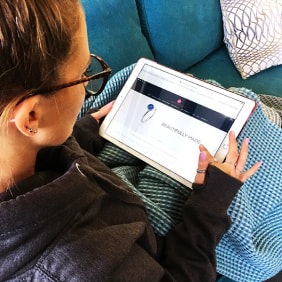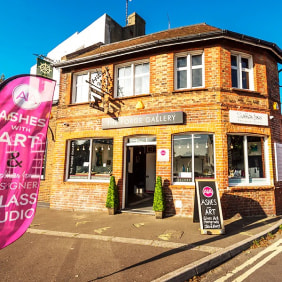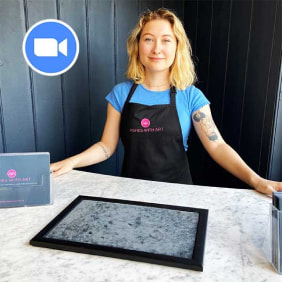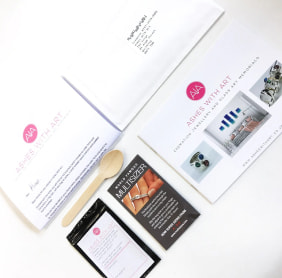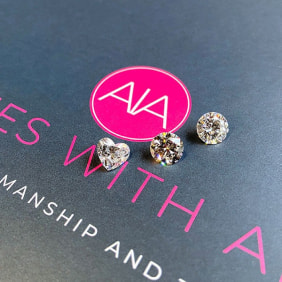Engraving ideas and quotes for jewellery
Engraving a piece of jewellery is an amazing way to turn something ordinary into something unique and one-of-a-kind. It can turn a simple gesture into a deeply meaningful gift. Jewellery engraving has always been a popular way to personalise jewellery or to send a message.
If you’re thinking about personalising a piece of jewellery with a hidden message, we’ve compiled this comprehensive guide. We’ll cover everything you need to know about the engraving process and include some suggestions for engraved messages you could include in a gift.
What is engraving?
Jewellery engraving is a specialised form of engraving that involves inscribing or decorating jewellery items, typically made of precious metals like gold, silver, platinum, or even non-precious metals like stainless steel. This process is used to add personalization, decorative elements, or meaningful messages to jewellery pieces, making them unique and sentimental.
Here are some common types of jewellery engraving:
-
Personalisation: Jewellery engraving is often used to personalise items like rings, necklaces, bracelets, and pendants. This can include adding names, initials, dates, or special messages to commemorate important occasions like weddings, anniversaries, or birthdays.
-
Decorative Patterns: Engravers can create intricate decorative patterns, designs, or motifs on jewellery surfaces. These designs can range from traditional to contemporary and can enhance the aesthetic appeal of the piece.
-
Gemstone Engraving: Some jewellery engraving techniques involve inscribing patterns or text directly onto gemstones like diamonds or sapphires. This adds a unique touch to the gem and can be used for identification or personalization.
-
Monograms: Monograms, which consist of interwoven initials or letters, are a popular choice for engraving on items like rings, cufflinks, or pendants.
-
Religious Symbols: Religious jewellery often features engravings of symbols, prayers, or verses that hold significance within a particular faith.
-
Coordinates and Locations: Some individuals choose to engrave the geographic coordinates of a special location or a meaningful location, such as the place where they met or got married.
Jewellery engraving can be done using traditional hand engraving tools, laser engraving machines, or computer-controlled engraving equipment. The choice of method depends on the material, design complexity, and the jeweller's expertise.
Hand engraving is the most expensive, but often produces the most satisfying results. This is because there are slight imperfections in the engraving which are not replicated with computer-controlled methods.
How is jewellery engraved?
Jewellery can be engraved using various methods, including traditional hand engraving techniques, machine engraving, and laser engraving. The choice of method depends on factors such as the type of jewellery, the material it's made from, the complexity of the design, and personal preference.
Here's an overview of these engraving methods:
Hand Engraving
Hand engraving is a traditional and highly skilled method of jewellery engraving. It involves using specialised hand tools, such as gravers or bruins, to manually carve the design into the jewellery's surface.
Skilled engravers can create intricate and detailed designs with this method. Hand engraving is often chosen for heirloom pieces or high-end jewellery due to its craftsmanship and artistic touch.
Machine Engraving
Machine engraving involves the use of mechanical engraving machines, which are capable of producing precise and consistent engravings. This method is often used for simple, straightforward designs or text engravings.
Machine engraving is faster and less labour-intensive than hand engraving, making it a cost-effective choice for mass-produced or lower-cost jewellery.
Laser Engraving
Laser engraving uses a focused laser beam to etch designs onto the jewellery's surface. It is highly precise and can create intricate designs with fine details.
Laser engraving is suitable for a wide range of materials, including metals, gemstones, and even some plastics. It is commonly used for both personalization and the addition of decorative elements.
Here are the general steps involved in jewellery engraving:
-
Design Preparation: Before engraving, a design is created or selected. This design can be a name, initials, a decorative pattern, or any other desired engraving.
-
Surface Preparation: The jewellery surface is cleaned and prepared to ensure that it is free of oils, dirt, or contaminants that could affect the engraving process.
-
Engraving: Depending on the chosen method, the jewellery is engraved by hand, with a machine, or using a laser. The engraver or operator follows the design and carefully etches it onto the jewellery's surface.
-
Cleaning and Polishing: The engraved jewellery is cleaned to remove any debris or residue from the engraving process. If necessary, it may also be polished to restore its shine.
It's important to choose a reputable jeweller or engraver with experience in the specific engraving method you prefer to ensure the best results for your jewellery engraving needs.
What can you engrave on jewellery?
You can engrave anything you like on jewellery. It could be your initials, a message, the coordinates of a special location, a date, or just a name. You can also engrave symbols or patterns on jewellery to add extra meaning. Just remember that this message is permanent, so you should think carefully before adding your special touch. This is particularly true if you are adding a message to a piece of jewellery with sentimental value.
Which pieces of jewellery are best for engraving?
For engraving to be effective, you need a large enough surface area to contain the message. Many types of jewellery can be engraved, but some pieces are better suited for engraving due to their design, size, and the ease with which they can accommodate engravings. Here are some popular jewellery items that are commonly chosen for engraving:
-
Rings: Rings are one of the most popular choices for engraving. Whether it's an engagement ring, wedding band, promise ring, or fashion ring, there's often a flat inner or outer surface where engravings can be added. Common ring engravings include names, initials, wedding dates, and meaningful phrases.
-
Bracelets: Bracelets, especially bangles or cuff bracelets with flat surfaces on the inside, are suitable for engravings. Engraved bracelets can feature personal messages, coordinates, or special dates.
-
Necklaces and Pendants: Many necklaces and pendants can be engraved on their reverse side or on a small charm attached to the necklace chain. Popular necklace engravings include names, monograms, and meaningful symbols.
-
Watches: The back of a watch case or the inside of a watch band can often be engraved. Engraved watches make for thoughtful gifts and can feature names, dates, or personal messages.
-
Lockets: Lockets have a hinged compartment where small photographs or messages can be placed. They are often engraved with initials, names, or short phrases.
-
Cufflinks: Cufflinks are frequently engraved with initials, monograms, or other personal symbols. They are a popular choice for men's personalised accessories.
-
Earrings: While earrings provide limited space for engravings, some stud earrings or small hoops may be suitable for simple initials or symbols.
-
Keychains: While not traditional jewellery, keychains can be engraved and make for practical and personalised accessories.
When choosing a jewellery item for engraving, consider the size of the piece, the available space for engraving, and the significance of the item. Personalised engravings add sentimental value and make jewellery pieces unique and meaningful. It's important to work with a skilled engraver or jeweller to ensure that the engraving is executed with precision and care.
What should I engrave on my jewellery?
Not sure what to write on your special piece of jewellery? Here are 30 jewellery inscription ideas for a wide range of situations:
For Personal Jewellery
-
Your Name
-
Your Initials
-
Your Birthdate
-
"Strength & Courage"
-
"Faith, Hope, Love"
-
"Breathe & Believe"
-
"Be the Change"
-
"Live, Laugh, Love"
-
"Dream Believe Achieve"
-
"Carpe Diem" (Seize the Day)
-
"Follow Your Bliss"
For Memorial Jewellery
-
"Always in my heart"
-
"My Forever Love"
-
"Infinite Love ∞"
-
"Eternal Flame of Love"
-
"With You, Always"
For Romantic Jewellery
-
"To Infinity and Beyond"
-
"Our Adventure Begins"
-
"You Complete Me"
-
"Love Conquers All"
-
"Two Hearts, One Love"
-
"Soulmates Forever"
-
"Love Never Fails"
-
"My Heart Belongs to You"
For Friendship or Family Jewellery
-
"Family First"
-
"Friends Forever"
-
"Sisters by Heart"
-
"Mother's Love, Always"
-
"You are my sunshine on a rainy day."
-
"Family is Forever"
For Inspirational Jewellery
-
"Believe in Yourself"
-
"Chase Your Dreams"
-
"Create Your Own Path"
-
"Find Your Inner Peace"
-
"Stay Positive, Keep Going"
These inscriptions can be adapted and personalised to suit your specific jewellery and the message you want to convey. Always consider the size and space available on your jewellery piece when choosing an inscription, and make sure it holds special meaning for you or the recipient.
Things to consider before engraving your jewellery
Engraving your jewellery is a meaningful way to personalise it, but there are several important factors to consider before proceeding with the engraving process:
Type of jewellery
Not all jewellery is suitable for engraving. While rings, bracelets, necklaces, and pendants often have flat surfaces or areas that can accommodate engravings, other jewellery items like delicate chains or intricate designs may not be suitable. Ensure that your jewellery has an appropriate surface for engraving.
Material
Different metals and materials respond differently to engraving. Precious metals like gold, silver, and platinum are commonly engraved, but some materials like tungsten carbide or ceramic can be challenging to engrave. Consult with a professional jeweller to ensure your jewellery can be safely engraved.
Size and space
Consider the size of your jewellery and the available space for engraving. Intricate designs or long messages may not fit on smaller pieces. It's essential to choose an engraving that fits within the available area without compromising legibility or aesthetics.
Purpose and message
Determine the purpose of the engraving and the message you want to convey. Whether it's a name, date, quote, or symbol, ensure that the engraving holds personal significance and is aligned with the occasion or sentiment you want to express.
Font and style
Select an appropriate font style and size for your engraving. The font should match the jewellery's design and your personal taste. Some fonts may be more decorative, while others are straightforward and modern.
Spelling and accuracy
Double-check the spelling and accuracy of the text or message you plan to engrave. Engravings are permanent, so it's crucial to ensure there are no errors.
Engraver selection
Choose a reputable and experienced engraver or jeweller to perform the engraving. Ask for recommendations, view their previous work, and discuss your preferences with them.
Maintenance
Be aware that engraved jewellery may require additional care and maintenance to preserve the engraving's quality. Certain cleaning methods or chemicals may affect the engraving, so follow care instructions carefully.
Timing
Plan ahead, as engraving may take some time, especially if the jeweller has a busy schedule. Ensure you have enough time before any special occasion or event where you intend to present the engraved jewellery.
Taking these factors into account will help you make informed decisions when engraving your jewellery, ensuring that the result is both meaningful and aesthetically pleasing.
Can you remove an engraving from jewellery?
If you think you’ve made a mistake with the engraving and want to remove it, you’ll need to visit a jeweller. Engraving removal is often done with a laser. The jeweller has to etch out the engraving with the laser and then polish the surface to make it a flat surface again. Depending on the type of jewellery, this can be a simple or complex process. It could result in a loss of metal, making the jewellery thinner and weaker.
It’s fairly easy to remove an engraving from any metal type, including softer metals like gold and harder metals like platinum. It’s not the metal type that makes it complex but the jewellery type. Very delicate pieces or intricate engravings will be more difficult to remove.
Closing thoughts
Jewellery engraving is incredibly popular as a way to turn a simple gift into something truly unique and one-of-a-kind. Before committing to one message or quote, think carefully about the type of jewellery, the placement, and the purpose of the engraving.
You should also be selective about who engraves your jewellery, particularly if it is a sentimental piece of jewellery. Choosing a reputable engraver will reduce the risk of something going wrong.
And finally, remember that adding an engraving to your jewellery will make it non-refundable and non-returnable, so you should check it is the correct size before committing to an engraved message.
